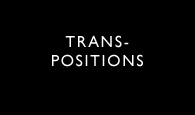Over the past week, there has been much in the British news about the proposed 25% government cut to arts funding, the UK Film Council being one of its recent victims. Among other reasons, supporters for government funding see the arts as a good revenue stream for a city (contributing to tourism, etc) as well as believe that the arts are good for us as humans and therefore require investment.
On the other side, a popular argument in support of funding cuts view the situation as a ‘no-brainer’ choice between luxury and essentials. We cannot do without the police but we can do without the theatre. Comments on this Guardian article demonstrate what I mean:
‘Let’s be honest, art is a luxury. If art was that important, we’d be flying it out to disaster victims. I don’t like any of these cuts, but if it’s a toss up between the money going to the arts or the NHS I doubt any of us would choose the former.’ – Ca1eb
Among the arts community, one of the main concerns is that without government funding, the arts will be driven by what has perceived economic value (and thus what people want to buy). What the government funding has tended to support are new initiatives and art forms that sit on the ‘edge’ of the art world, many that wouldn’t have the support of the public. Government funding also supports local and regional initiatives, especially projects that are starting up in low-income areas. The suggestion by the government for moving forward is to make up the gap through private donors. However, the concern is that one will end up with a well-funded Royal Opera but no money for local and new initiatives. A change in funding shifts the power to the consumer rather than transcending the consumer and putting the power into a committee of people who presumably have an ‘eye’ for up and coming art. There is a real fear that ‘without this vital test-bed of activity, it is hard to know where future experimentation and innovation will come from.’ (Axis) Perhaps the arts community has cause to be concerned if these comments are indicative of the public opinion:
‘Scammers lile Hirst and Emin have left the average punter with an amused disdain for arty people who whinge when they are threatened with eviction from their luxurious ivory towers… Artists, get into the spirit of the age, we are all working harder for less money, get out on the street, like buskers .Go to the punters, don’t sit on your backside, raking in the grant money, it corrupts your art,it is only supposed to be valuable when you are dead.’ – jimfred
‘Britain is an intrinsically philistine country where the arts have to fight for money in times of plenty, now with money in short supply and a deeply philistine government in power, the arts have no chance.’ – petrifiedprozac
To what extent does how we spend our money give evidence to what we find to be valuable and meaningful? While a cut in government funding does provide opportunities for funding to emerge elsewhere or can be a catalyst for creative thinking being applied to arts funding, at the end of the day, art costs money, and I would argue, good art requires investment. For an artist to have the time to develop their skill and craft, they need the ‘luxury’ of patronage from somewhere else. However, I think the culture of inaccessibility that has characterised modern and avant-garde art is the genesis of this discussion. Would we be discussing art funding at all if the public viewed the arts as meaningful to their day-to-day life?
I’ll end my discussion by posing the question, ‘What makes art meaningful and can art be meaningful apart from God?’. Do these questions about funding circulating in the public sphere create an opportunity for the Church to once again consider her role as patron to the arts, investing in art that is grounded in meaning found in God and then offering it to the public?
Photo Credit: Oskay’s Photostream (creative commons license)





The commenter “jimfred” you quote has a point, although it is stated crudely and imprecisely: artists should not expect to always receive funding for whatever project they happen to want to do. Often artists need to do practical, workmanlike projects that others will pay for even when money is tight. Eric Gill, for example, had no problem leaving his sculpture aside to carve lettering on gravestones.
Of course it is good to have patronage to produce the works that have less obvious value prior to being made, since many works produced in such a way are now classics admired the world over, but it is not an artist’s right. The problem today is exacerbated because Damien Hirst and his type are the archetype of artists in the popular mind. Regardless of the actual value of a cow cut in half, a skull covered with diamonds, or a shark in formaldehyde, most people think such things ridiculous. They may not mind rich people paying for this with their own money, but they do mind such things being extracted from their own paychecks by taxation.
This is always the danger with government-funded art. The money ultimately comes from people who are compelled to give it up, and they may rebel if they feel that the art being funded is worthless or worth little. Patronage by the rich, the church, and so forth avoids the problem of coercion.
I think that behind the funding question is a much deeper one that everyone needs to grapple with: is art an essential or a luxury? Of course, we may have a false dichotomy here, but the question becomes more pointed if we consider a ‘lifeboat’ scenario. If the world is under threat from a major (say, environmental) disaster and our very existence is threatened, then what do you bring in the lifeboat? When it comes down to it, do we want artists producing art when they could be actively working to prevent or solve a major catastrophe? Is art essential to human survival? For an interesting read, Suzi Gablik explores these issues in an interesting collection of interviews titled ‘Conversations at the End of Time.’
Thanks, Jim, for the comments and questions. My first thoughts are art is not essential for the survival of the physical body in the same way that food, water, and shelter are. But what’s interesting is that I reckon that a lot of people would bring with them ‘art’ which is meaningful – art that is connected to a memory, a person, a place that they don’t want to leave behind. I think that art taps into that which makes humans unique – the part that makes us more than just physical beings – the part connected to our memory and our imagination. So if we lose art, do we lose part of what makes us human? Does art help us as humans to fully survive (not just physically survive) a major catastrophe? This is where I think that we probably get back to meaning. I think I’m starting to conclude that for most people art is meaningful because of what it points to/reminds of and that contemporary art doesn’t provide most people with starting point for meaning. What do you think?
At the risk of being controversial, I’m going to baldly state that I think art is essential to human survival. That said, I should probably say something about what I think art is, and how I think that relates to the professional artist. I think that the set of cultural practices that we call ‘art’ rely upon the human capacity to entertain other ‘levels’ of reality above, beyond, or within the concrete present. By levels I simply mean that humans (and maybe some animals, I don’t know) have the ability to section off parts of our everyday existence and say, “this is special.” Our imagination works within this capacity by exploring possibilities: what if the world were different, what if there was a major catastrophe, what if my face was blue, what if this sword has magical powers, what if God is present here.
Many activities and professions rely upon our capacity to ‘make special’ (I wonder if the world would be meaningful without it), but it seems to me that artists rely upon this capacity in a unique way, and that works of art exercise this capacity in all of us. So, it might be helpful to have a professional artist on the lifeboat to remind us that metaphor and fiction are tools that we have used to help us survive in the world. But, this does not mean that sophisticated academic painting is essential to human survival. In fact, I think that most of what professional artists do is not essential to survival, even though I think that art making and art appreciating relies upon a capacity that I think may be essential to human survival.
So, I’m on the fence as to whether I would want a professional artist on my lifeboat (no offense intended to professional artists!) But I suppose what I don’t want is a boat full of people who think that fiction, art, and metaphor are useless and silly.
I am certain that, in the event of a major catastrophe that destroys most of the earth, the loss of art (paintings, sculptures, books, etc.) and the traditions that shape our artistic practices would be a much greater loss than we can appreciate on this side of such a catastrophe. Could humans survive without all that stuff? Probably. But I wonder if artistic practices ‘die out’ whether it will be possible to maintain the capacity to ‘make special,’ or whether this capacity would become greatly impoverished.
This is all largely conjecture, and, though I am basing my ideas on Ellen Dissanayake’s book ‘Homo Aestheticus’, I am not sure whether she would agree with what I have said or not. In the end, I just don’t know whether art is necessary for human survival, and I don’t really want to find out. Any thoughts, comments, suggestions would be greatly appreciated as I have not worked through these ideas carefully enough yet.